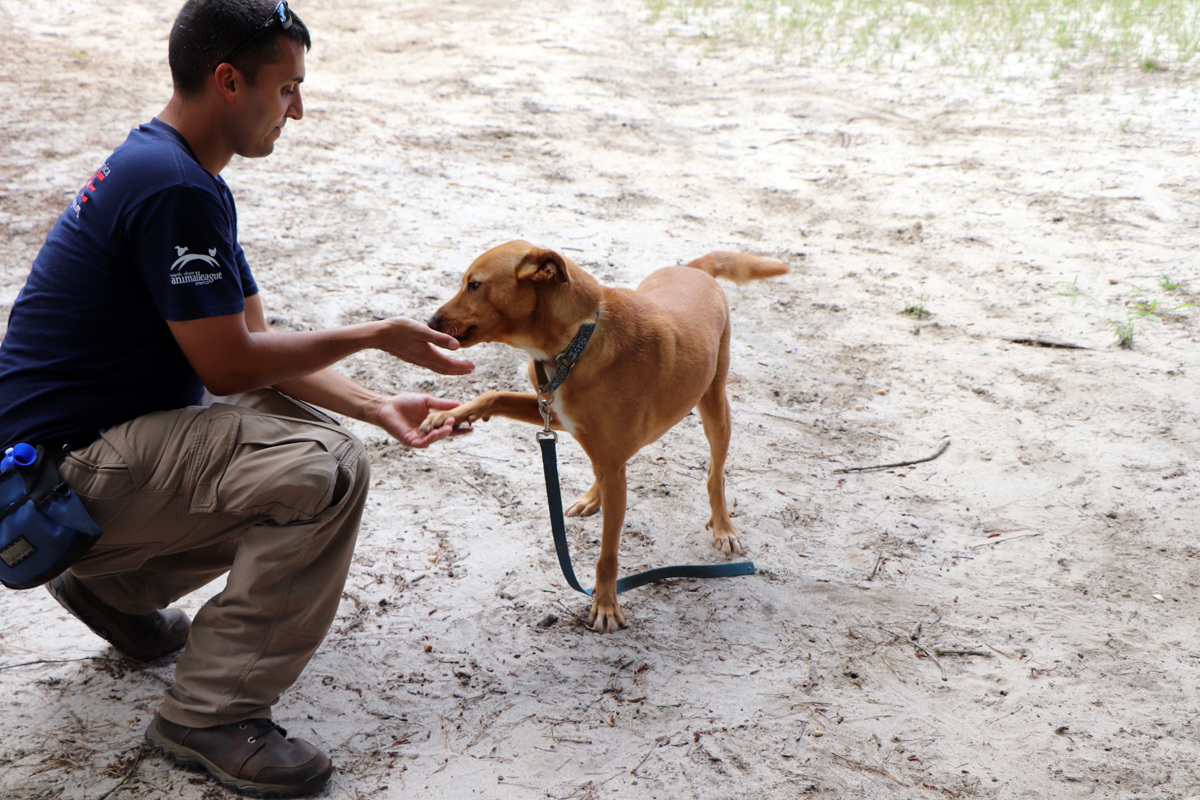Is your dog making accidents all over the house? Or does your dog need to learn how to behave around other dogs, or even around other people? If you need help training your dog to be well-behaved, read the tips below, all of which are provided by experts at North Shore Animal League America. But keep in mind, training your dog or puppy will take plenty of time and patience!
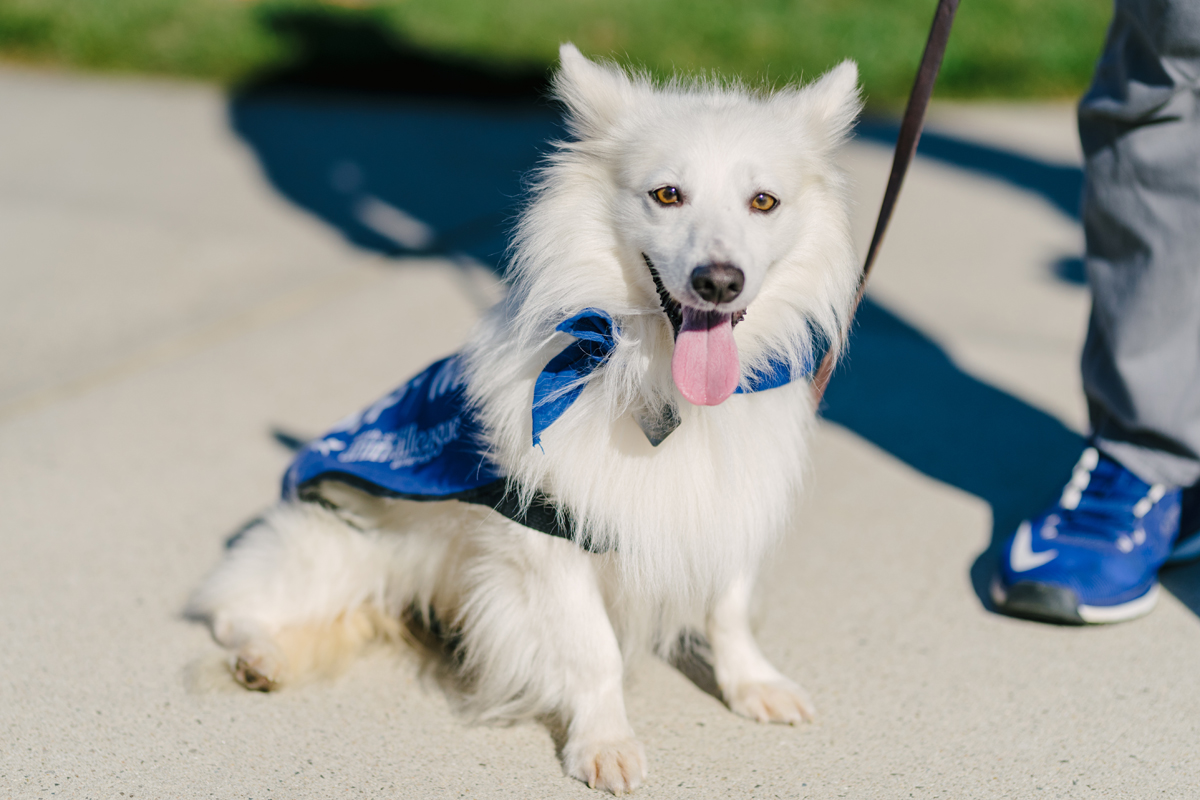
Basics of Housetraining Your Dog or Puppy
Step 1: Confine your dog in a small area, free of carpet, with water and an appropriate chew toy, using a training crate or gate (not in an isolated area or behind a closed door). Do not give the dog bedding in this area until you know he/she is holding his urine.
- Unless you are training a very young puppy, it is not necessary to use paper training. The difference between housebreaking and paper training is the toilet area and method of confinement. For paper training, provide the dog with water, something to chew, and a bed on one side of the room. You may use a crate with bedding as long as the door is left open so the dog has access to the paper. Put paper on the other side of the room.
- Paper training is generally used when the dog is too young to have the muscle control to hold his urine for more than a few hours. The general rule is that a dog can hold his urine for an hour longer than his age in months. However, this may vary. When the dog remains dry overnight, you can begin to housebreak him.
Step 2: Clean accidents using 50% vinegar/water solution or an enzyme cleaner (“Natures Miracle” or “Eliminate”) to prevent the dog from being drawn back to the same area.
Step 3: Maintain a consistent schedule for your housebreaking routine to help your dog anticipate the time to eliminate and to help you predict the time. A routine will ensure all your dog’s needs are met.
Step 4: Feed a good diet on a schedule, and feed in the confinement area to reinforce cleanliness. Only leave food down for half an hour during each meal.
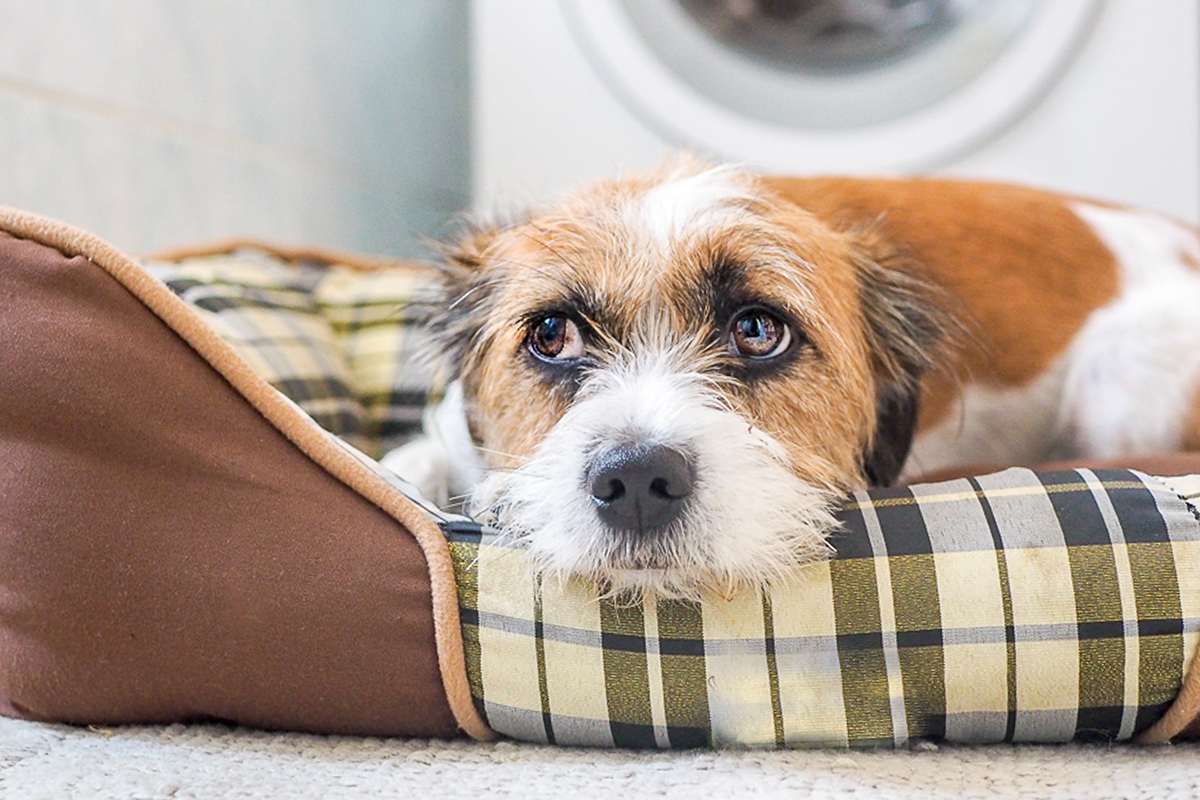
Step 5: Supervise the dog when out of confinement with an indoor leash or tether so the dog is more accessible to help prevent accidents.
Step 6: When changing the dog’s diet, gradually introduce the new food in 25% increments.
Step 7: Pick up his/her water one hour before bed time, especially with puppies whose bladders are not fully developed.
Step 8: Begin to enlarge the confinement area when you notice your dog is regularly clean.
Step 9: Do not reprimand for an accident you didn’t see happen. If you witness an accident, give the dog verbal correction (NO) and bring dog to the proper place.
Step 10: Always take the dog out the same door, using the command “Out.” The dog will learn to go to that door when he needs to go out. You can tie small bells to your doorknob and ring them before going outside. Your dog will learn to ring the bells himself to let you know he needs to go out.
Step 11: On leash, bring your dog to the same spot each time, and stay there until he/she eliminates. Attach a word to the action such as “empty” and always praise verbally. Say the word as the dog is urinating or defecating, not before or after.
Step 12: Most importantly, the dog should be in the confinement area when not supervised to prevent uncorrectable accidents. Confinement should be supplemented with plenty of exercise!
Fun fact: the four most likely times for a dog to eliminate are after eating, during exercise, during excitement, and upon waking!
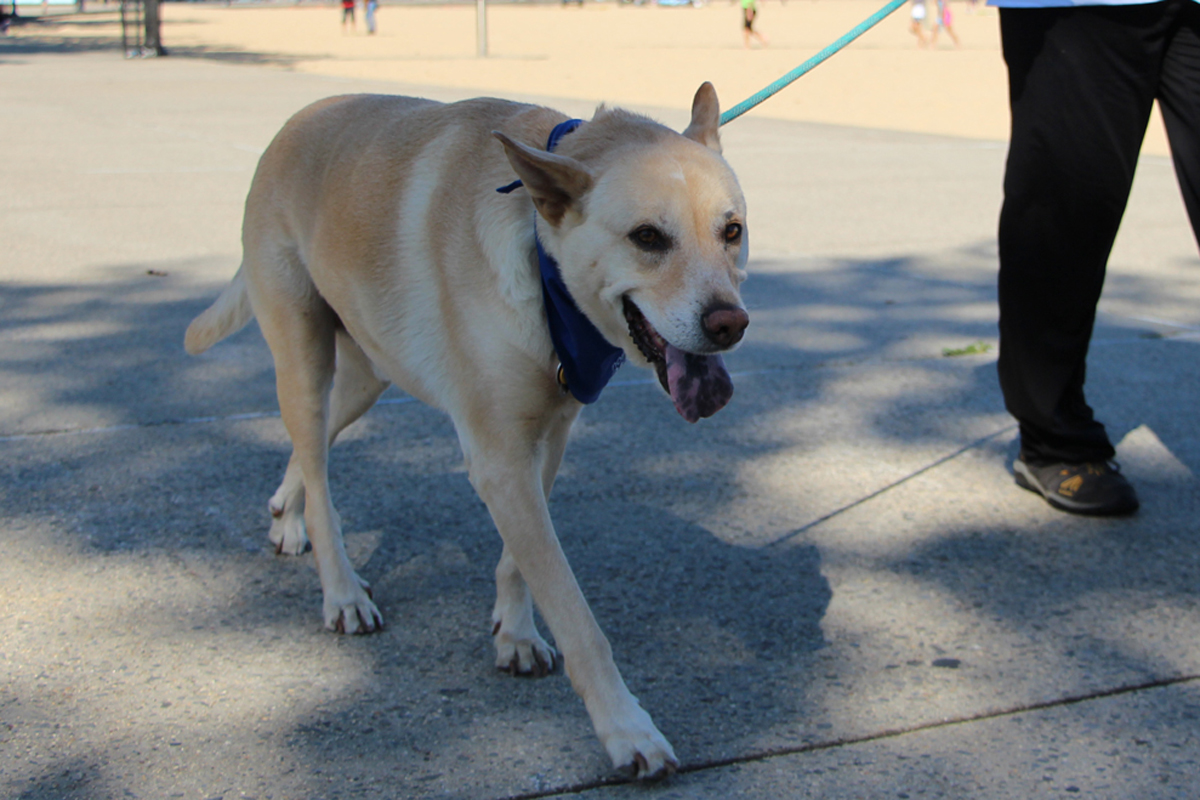
Points to Know When Socializing Your Dog with New Dogs
Dogs are social animals. They enjoy meeting other dogs, and it can create a great experience for both the dog and the guardian. However, before interacting with other dogs, it is important to make sure that your dog is well socialized (and fully vaccinated)!
It is a good idea to go to a dog park for the first time when it is not crowded, so your dog will be more comfortable. Most dogs are friendly, but it is not uncommon for dogs to not get along. Overall, there are a number of points to consider when your dog meets a new dog…
Point 1: Dogs should initially meet on neutral territory (somewhere either dog has never been)! Dogs can be territorial and may act aggressive when feeling that a new dog is intruding on their area.
Point 2: Make sure both dogs are initially on a leash, but be careful not to get the leashes tangled, unless the dogs may feel trapped. This can potentially lead to a fight.
Point 3: Do not introduce the dogs “head on,” instead, walk with them parallel to each other until they are calmly walking side by side. Once they are calm and you are positive there are no signs of aggression, proceed to a confined area and drop the leashes (but keep the leashes attached to the collars in case of a problem occurring).
Point 4: While there is not as much of a risk for aggression with puppies, still always ask the owner (whether he/she is a dog or puppy) if he/she is friendly with other dogs.
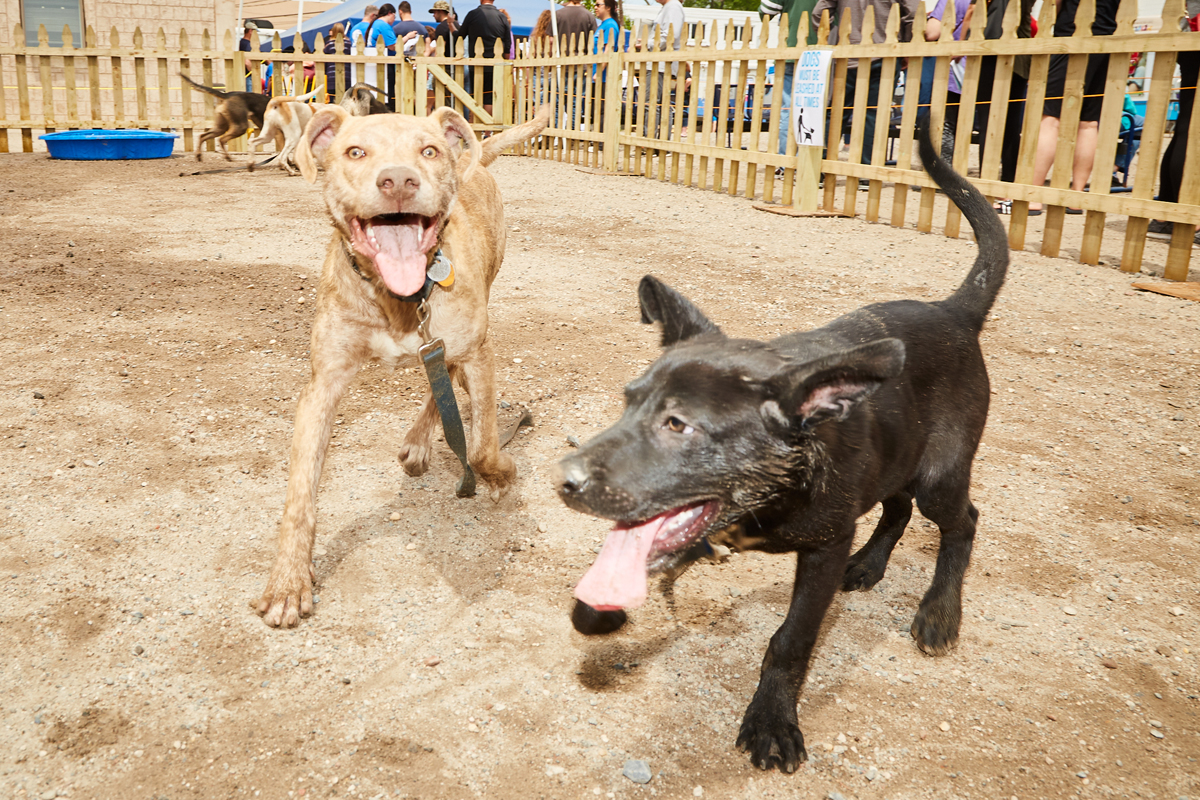
Point 5: Positive experiences are very important when initially socializing your dog. If your dog has a negative experience, they may react fearfully the next time they meet a dog or even be aggressive towards dogs. Thus, make sure the dogs are getting along before letting go of the leashes, which as noted earlier, should only be done in a safe, enclosed area. Even if the dogs were getting along well in the beginning, there is still a chance for aggression and you’ll want to watch for signs of it. For example, some dogs may try and mount each other soon after meeting. This can lead to aggression if the other dog does not accept it or if both are trying to mount each other and neither gives in.
Point 6: Know the difference between a fight and a squabble. It is important to not correct small communications from either dog that are meant to say “too much!” or “I’m uncomfortable!” (i.e. a growl, air snap, etc.) This could accidently teach the dog to stop communicating and go straight to biting.
Some signs of aggression or potential conflict as opposed to play may sound obvious, but other signs may be subtler. Watch for raised hackles, body stiffening, growling, lunging or charging, furrowed brows, hard stares, snarling, air snaps, showing teeth, tongue “flicks”, deep, guttural barks, or high, fast tail wagging along with defensive barking and tension.
The dogs may exhibit all of the signs at some point, but if you are not experienced with your dog’s reactions, or other dogs, make sure you act on all of them. Sometimes these signs are normal interactions between a dog and a puppy. The growl may not be enough of a warning and this may progress to a snap or a nip. This, in most cases, is a harmless and neutral interaction between dogs that are learning how to act around a particular dog.
However, unless you are well versed in dog body language and interactions, you may not know which is normal and what can turn into serious aggression, where one, or both dogs, can be injured. When in doubt, do not take unnecessary risks.
Point 7: Remember to try to initially socialize your puppy or dog with an older well-socialized, friendly dog so that your dog does not feel threatened.
Point 8: In case a dog fight breaks out, DO NOT GRAB either dog! Instead, try to grab the leashes and pull them apart, as a dog fight may injure people when trying to separate them. You may also use something as a barrier (baby gate, chair) to wedge in between them.
Point 9: If your dog has aggression issues with other dogs, please call a professional for help!
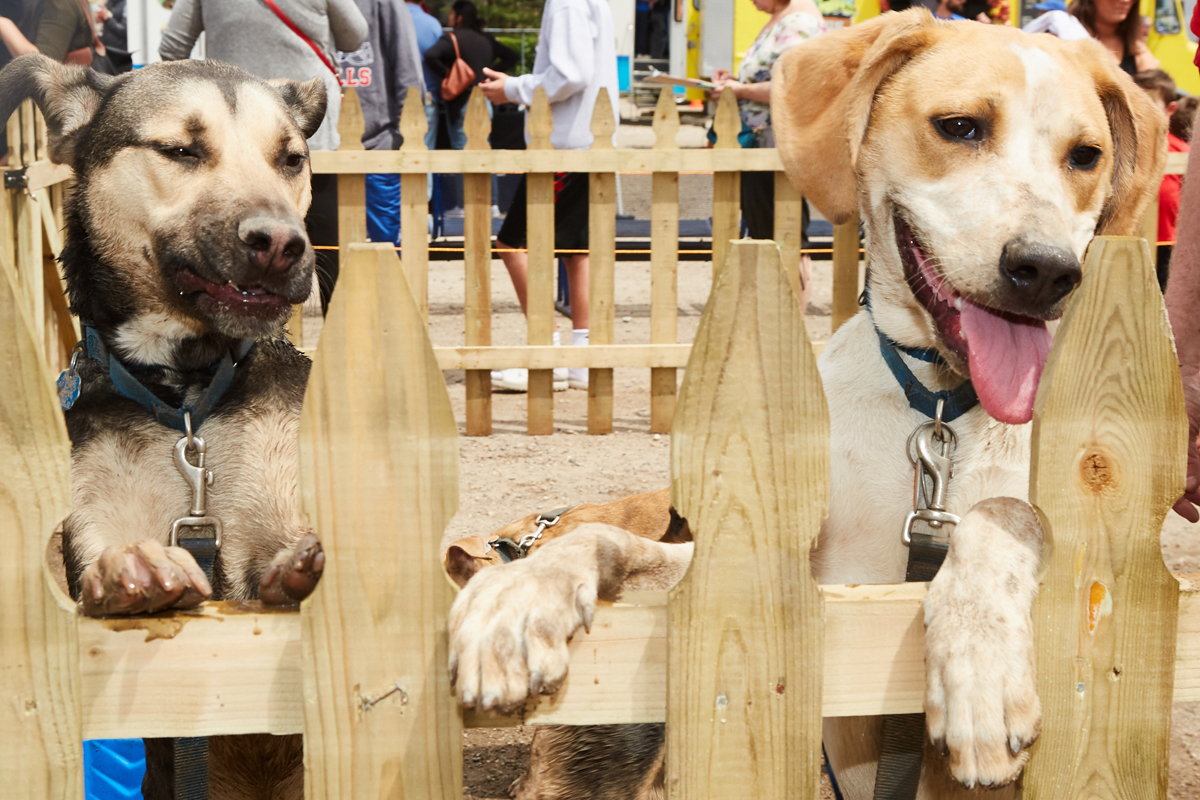
How to Deal with Unruly Behavior at the Door
Is your dog easily over-stimulated when you return home, when someone knocks on the door, when the bell rings, or when someone new comes in? This excitement in dogs’ behavior is extremely common. Dogs have excellent hearing, making them aware of someone’s presence well before you are. Dogs become alert before the knock or the bell, and their excitement just builds as the person appears at door, enters the house, and greets the dog. Sometimes the excitement is too much, and the most effective way to correct the behavior is to take it on in steps:
Step 1: Plan Ahead: Place a sign on your front door instructing visitors to ignore the dog to remove that initial triggering stimulus. You can also have you’re the guests alert you of their arrival without coming to the door (honk the car horn or call). Bring the dog outside on a leash while you greet the person. Enter the house together. Keep the dog on a leash.
Step 2: It Starts With You: Keep treats in your car or pocket, and do not give the dog attention when you get home until he is calm. If he jumps, turn away and ignore him because he is doing it for attention. When he gets off, say “off” and drop a treat on the floor, teaching him this command. Maintain as little interaction as possible until he is calm.
Step 3: Doorbell/Knock Game: This is a counter-conditioning exercise for unruly behavior at the door and preliminary sit/stay at the door. Ring bell or knock on the front door. Have food on hand. When the dog runs to the door, show food and say, “sit.” When the dog sits, praise, and say “free”, (meaning the dog is “free” from the command). Throw the food away from the door so you can ring or knock again to repeat the exercise a number of times. Progress by adding a familiar person at the door. The person should ignore the dog until they enter and the dog is calm.
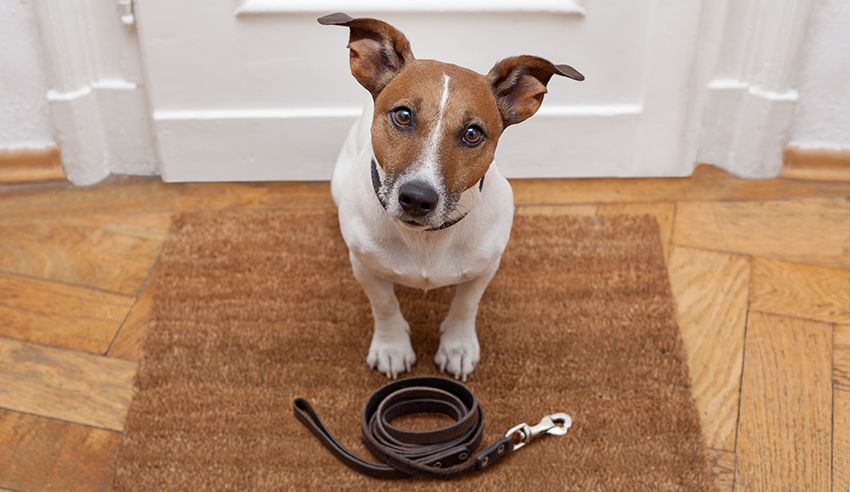
Step 4: Sit/Stay at the Door: This exercise should be done after the doorbell/knock game and when the dog has learned sit and stay. Don’t set the dog up to fail by expecting him to stay too long at first. Praise his first sign of cooperating and release him from command and gradually build on it.
First ring the doorbell with no one there. Bring the dog to the door on leash. You should be closer to the door than the dog. Have the dog sit at your left side, an arm distance from the door. Say “stay”, and use the stay hand signal the dog has learned. Hold the leash up alongside the dogs’ right ear; make sure it is loose, not too tight, as the dog must choose to stay, there not be held there.
Open the door. If the dog goes to get up, use a leash correction (straight up with your left hand) and say “no”, and start again. If the dog stays in position, praise and treat. Then use his “release word” (“free”) to release him from command. Practice this as often as necessary for the dog to maintain the sit position while you open the door. Then gradually add distractions: act as though you are greeting someone, have family members knock or ring and act as company instead of walking in. The person handling the dog should be the only one interacting with him.
After the dog has maintained the position, when people he sees all the time enter, have him “stay” while they greet him. They should not pet him or use his name (when a dog hears his name he has a tendency to move). Repeat the above steps with people the dog doesn’t usually see.
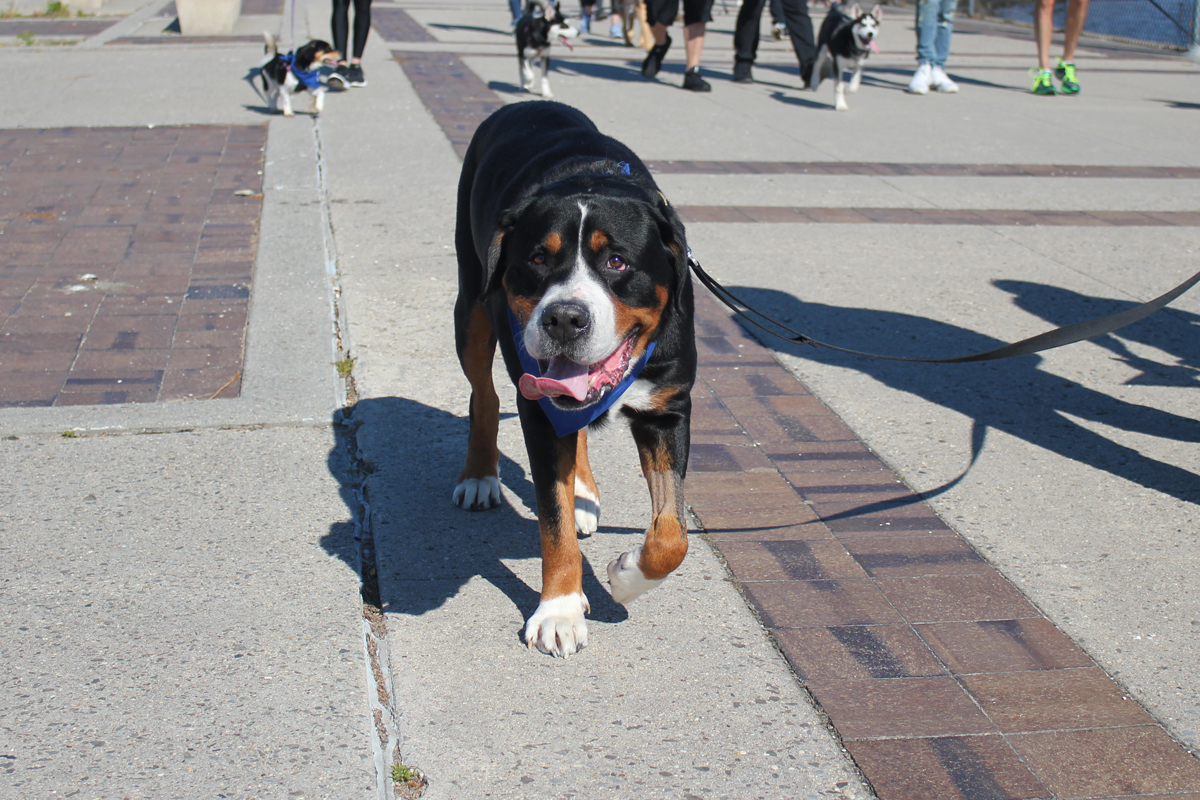
Additional Tips for Unruly Behavior:
- The inability to act on dogs’ instinct to investigate everything they see due to constant confinement can lead to “Barrier Frustration.” The dog becomes agitated when someone goes by or enters the house. To avoid this, make sure to socialize the dog by providing regular exercise and exposure to the world outside of your home.
- If the dog is fearful or anxious, use music to calm him. When you are alone relaxing, repeatedly play soothing music. You will be building a positive association with this music, and it will begin to calm the dog whenever he hears it. Once the association is established, play this music whenever you have guests.
- Have your dog behind a gate where he can see your guests and become accustomed to their presence. When the dog is calm, bring him out on a leash.
- With each method of greeting, once everyone is settled and you are comfortable with the dogs’ behavior, drop the leash. Praise the dog for appropriate behavior only and eventually have your guest give the dog treats without making eye contact.
- Appropriate behavior to praise for includes: sitting or lying down, being quiet, making right decisions, etc.
Additional Commands:
Teach Your Dog to Wait at the Door:
As the “pack leader,” you should always go through the door first. If the dog goes through first without your permission, he is claiming the territory he is entering as his own. If you do not have control over the dog before leaving the house you will not have control when you are out of the house. Thus, teach the dog to “wait” at the door. Wait is different than stay. Stay means to stay in one spot in one position; wait simply means “don’t follow.”
When you go to open a door the dog is typically there waiting for you to open it. Have a soft or small treat available. You should be closer to the door than the dog is. Say, “wait” and give the dog a treat as you slowly start to open the door. If the dog goes to run out the door make a sharp noise like “eh” and close the door in his face. Wait a second and the dog will be waiting again. Repeat the above.
You want to be able to open the door wide enough for the dog to get through while he continues to wait for the command to “go through.” If you are going out with him, go through the door first, and then tell the dog to “go through.” If you are just letting him out into the yard and not going with him, still make him wait and then say, “Go through.” This exercise teaches the dog to wait at the door and to only go out when given the command to “go through.” Once the dog understands he only goes through the door when given the command to do so, you can justifiably bait him for running out the door.
When baiting for running out the door, make sure you initially practice this at a door leading to an enclosed area or have a long line on the dog for safety. Set up the situation that would typically cause the dog to run out (such as when someone comes or if the door is left ajar). Hide on the outside of the door against the house with pot lids. The second the dog’s nose comes through that door, bang the pot lids in his face or throw them down in front of him without saying anything. The dog will quickly learn that when he goes out the door without permission, a thunderous noise comes out of nowhere.
Teach Your Dog “Here” so that Coming to You is Not Negotiable:
“Here” is a word dogs immediately associate with being given something and can be used before the dog has learned “come.” It is especially useful for dogs that have learned to ignore “come.” “Here” means to come to you so you can hold his collar. Start by standing directly in front of the dog with an extra special treat. Say the dog’s name and “here,” giving him the treat and holding his collar. Pair a sound such as two clicks of the tongue with the treat and it will eventually take the place of the treat. Then release the dog and say “free.” Gradually, build the distance between you and the dog until he immediately comes from all over the house, and then start from the beginning in the yard. Nothing negative should ever happen to him when he hears “here.”
